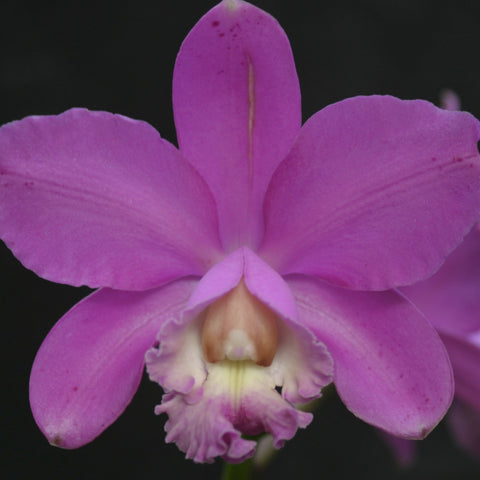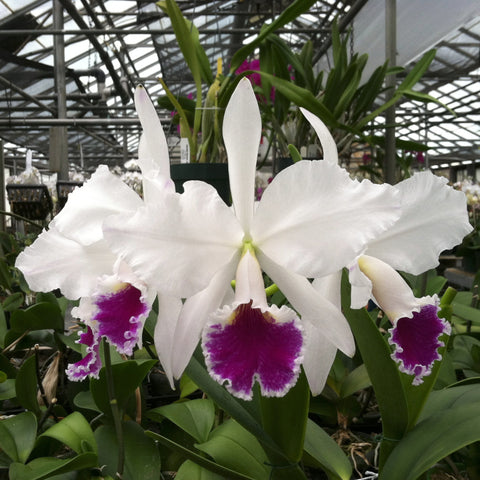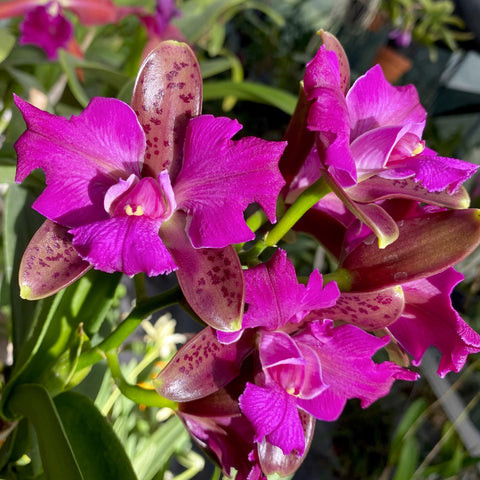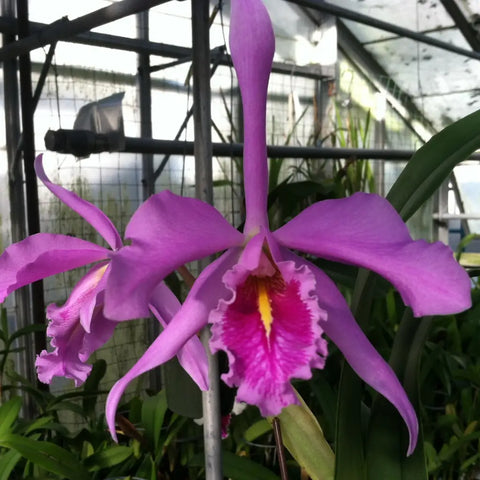Brassavola cucullata (appendiculata) Cattleya Orchid Species 2" Pot
B. cuculata (appendiculata)
(species)
Also known as the "Hooded Brassavola" or "Daddy Long-Legs Orchid," this distinctive species is native to Mexico, Central America, the Caribbean, and parts of South America. It's prized for its long, narrow, pendant leaves and dramatic, spidery blooms with a delicate fringed lip. Flowers are creamy white to greenish-yellow and release a sweet, citrus-like fragrance at night—perfect for evening enjoyment and a favorite of nocturnal pollinators.
This very fragrant Cattleya-relative can produce up to three large blooms at a time when mature. Availability is extremely limited and highly sought after by collectors who love unusual, fragrant orchids.
-
2" pot
-
Near Blooming Size
-
Summer Bloomer
Add this show-stopping, fragrant species to your collection before it’s gone!
Cattleya Culture
Light:
Light is the most important factor for growing and blooming cattleyas. They love bright light but not harsh, direct sun in the middle of the day. In your home, an east-facing window is ideal, or a shaded south or west window (use a sheer curtain if needed). In a greenhouse, aim for 50–70% full sun (about 3,000 to 5,000 foot-candles). A healthy Cattleya should have medium green leaves and stand upright without needing a stake.
Temperature:
Cattleyas like it warm during the day—about 70–85°F—and cooler at night—around 55–60°F. Seedlings do best with slightly warmer nights. A day/night difference of 15–20 degrees helps trigger blooming. They can handle up to 95°F if humidity and airflow are increased.
Watering & Humidity:
Watering depends on your pot size, media, temperature, and light levels. Mature plants need to dry out completely before the next watering. Seedlings prefer a bit more moisture. You can tell when it’s time to water by lifting the pot—light means dry, heavy means wet. When in doubt, wait a day. Never use water below 50°F, and avoid softened water with added salts.
Cattleyas enjoy humidity between 50–80%. At home, use a humidity tray with pebbles and make sure your pot doesn’t sit in the water. Airflow is key—moving air helps prevent disease. In greenhouses, use humidifiers or evaporative coolers to maintain proper moisture in the air.
Fertilizing:
Feed your cattleyas regularly. If you're growing in fir bark, use a high-nitrogen formula like 30-10-10. Otherwise, use a balanced fertilizer. During active growth, fertilize every two weeks. When growth slows, switch to once a month. You can also feed lightly (at ¼ strength) every time you water. Once a month, flush with plain water to wash out any salt buildup.
Repotting:
Repot every 2–3 years or when you see roots creeping over the edge or the potting mix breaks down. The best time to repot is right after blooming or in spring—just before new roots start to grow. Use coarser mix for mature plants, finer mix for young ones. Only divide a plant if it has at least 6 pseudobulbs. Each division should have 3–5 healthy bulbs. Pick a pot that allows for two years of new growth.
To repot:
-
Place fresh mix against one side of the new pot.
-
Trim any dead roots.
-
Lay the healthy roots on the mix with the cut rhizome against the pot wall.
-
Fill in and firm the mix around the roots.
-
Stake if needed.
-
Keep humid and shaded until you see new root growth.
We Also Recommend




